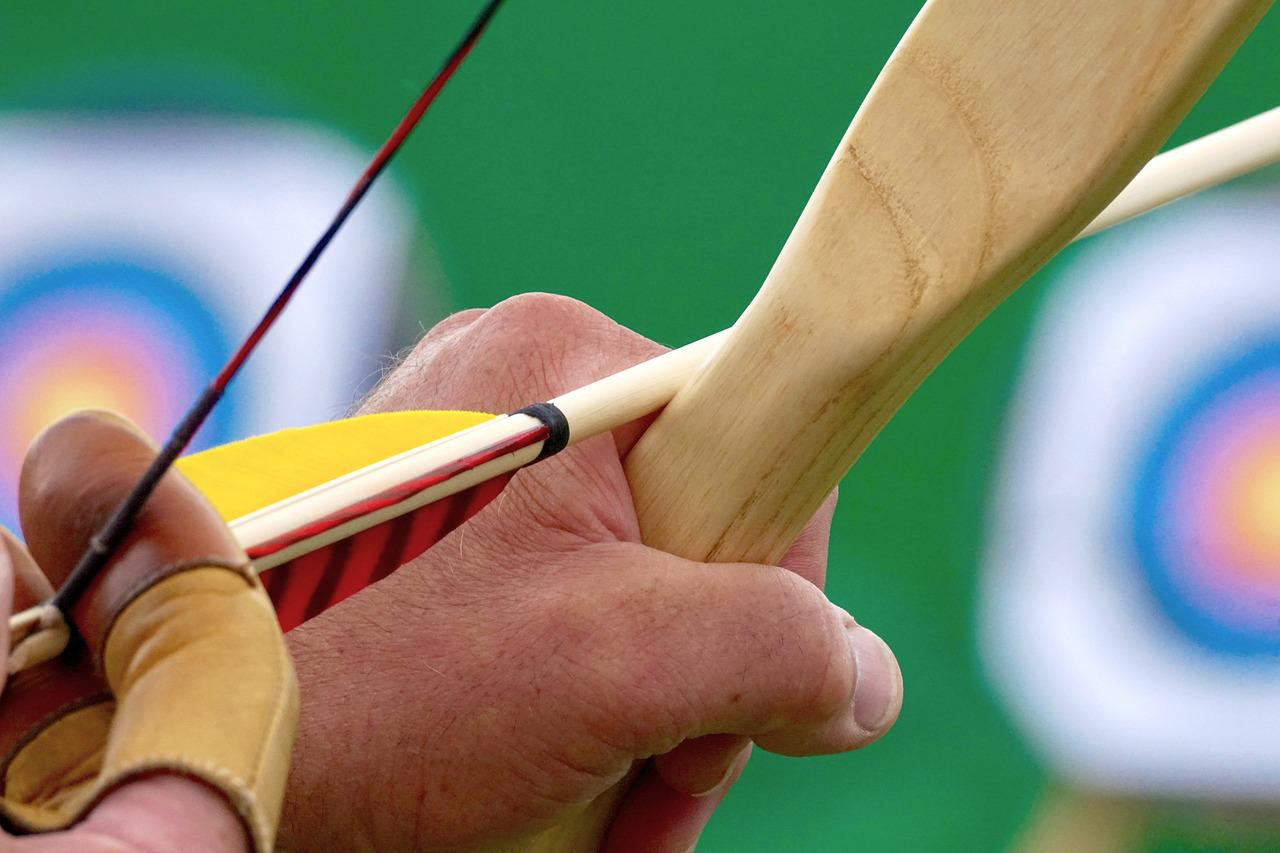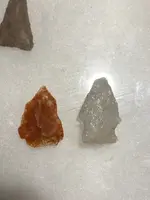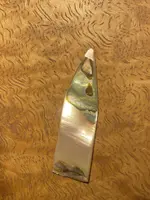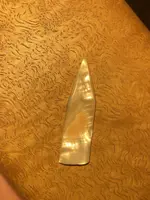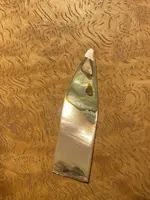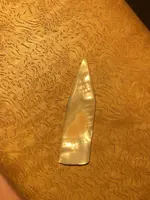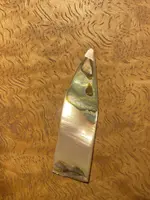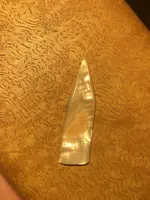Spinning the shaft by creating rotating drag (resistance to flight/air) would be better done by fletching on the rear of a shaft.
We've tried varied ways to stabilize. And it's interesting that creating drag isn't as hard as well fletched arrows we see or have used. (Though the art is certainly appreciated).
Just securing the front and rear of a feather on an atlatl dart improves drag compared to a bare shaft. Didn't even flatten some.
Modern archery stresses same side wing feathers. And how vanes are secured matters in shaft rotation. Maybe someone else sees it different , but I'd weep if tasked with determining (or worse creating by design) number of turns in a given distance.
The cutting end of a game head needs to slice and cause hemorrhage if an edged head design is the goal..
A misplaced mishap striking hard bone will test design and material. But stabbing with a knife into soft material makes more sense. A double lunged critter and the arrow/shaft and cutting head has done it's job. Outside of needing to break or deflect off a rib on entry maybe , it doesn't take much to poke a fatal lung or other vital damaging hole.
But crafting a cutting head with art (regional school or era or traveled ) and balance applied is not going to hurt.
Rotation? Possible steering from the rear. How controlled is debatable.
Front of center (weight balance deliberateness) of a completed arrow or shaft would concern me more.
The arrow's fletchings steer the arrow towards the intended target, which is why arrows rotate in flight. Additionally, it is mainly to help in increasing

archeryheaven.com





